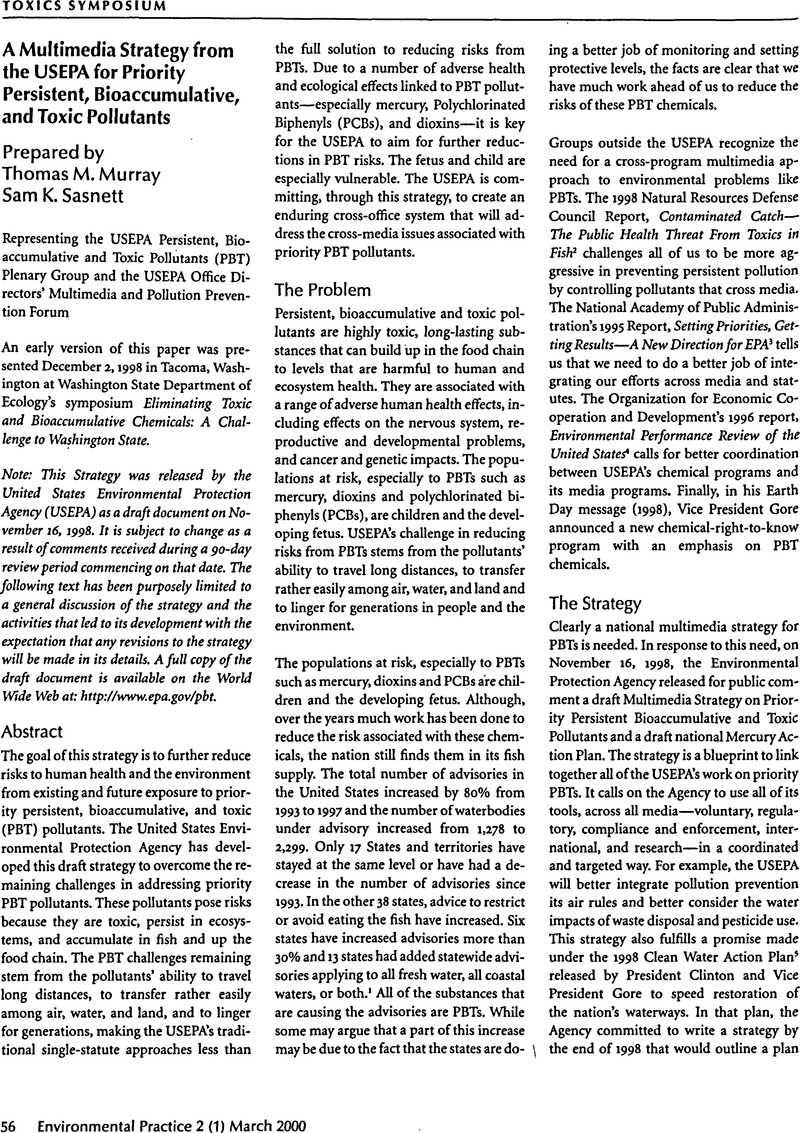No CrossRef data available.
Published online by Cambridge University Press: 13 July 2009

1. USEPA National Listing of Fish and Wildlife Consumption Advisories, 1997, EPA-823-F-98-009.
2. Natural Resources Defense Council. 1998. Contaminated Catch—The Public Health Threat From Toxics in Fish.Google Scholar
3. National Academy of Public Administration, Washington D.C., 1995 Setting Priorities, Getting Results—A New Direction for EPA.Google Scholar
4. Organization for Economic Cooperation and Development 1996. Environmental Performance Review of the United States. OECD Publications Center.
5. USEPA and US Department of Agriculture 1998. Clean Water Action Plan: Restoring and Protecting America's Waters. EPA-840-R-98-001.
6. The Great Lakes Binational Toxics Strategy: Canada—US Strategy for the Virtual Elimination of Persistent Toxic Substances in the Great Lakes 1997.
7. USEPA, Office of Solid Waste, Waste Minimization Prioritization Tool (WMPT) (Beta test version 1.0): Users Guide and System Documentation (EPA 530-R-97-019) June 23, 1997. www.epa.gov/wastemin.
8. National Health and Nutrition Examination Surveys (NHANES), http://www.cdc.gov/nchswww/about/major/nhanes/nhanes.htm.
9. USEPA, EPCRA Section 313 Toxic Chemical Release Inventory, EPA 745-B-97-008, Office of Pollution Prevention and Toxics, Washington D.C., November 1997. http://www.epa.gov/opptintr/tri/general.htm.
10. Memorandum of Understanding between the United States Environmental Protection Agency and the American Hospital Association, June 24, 1998.
11. Mercury Pollution Prevention Initiative, Voluntary Agreement between the Lake Michigan Forum, Indiana Department of Environmental Management, US Environmental Protection Agency and Bethlehem Steel Burns Harbor, Ispat Inland Inc. Indiana Harbor Works and US Steel Gary Works. September 25, 1998.
12. USEPA, Proposed Category for Persistent, Bioaccumulative and Toxic Chemical Substances, Federal Register OPPTS-53171; FRL-5771-6. October 5, 1998.